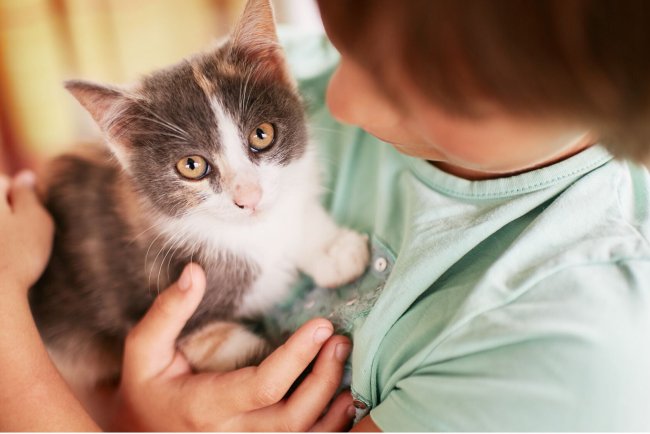Supervet on Vital Pet Insurance Questions
Pet insurance has become a crucial component of responsible pet ownership, offering financial protection against unexpected veterinary costs.
Pet insurance has become a crucial component of responsible pet ownership, offering financial protection against unexpected veterinary costs. With various policies and providers available, navigating the world of pet insurance can be overwhelming. To help you make informed decisions, we’ve consulted with the Supervet to address essential questions about pet insurance, providing insights into what you need to know to secure the best coverage for your furry friend.
Pet insurance provides a safety net for pet owners, ensuring that they are not financially burdened by unforeseen veterinary expenses. The Supervet, a leading authority in veterinary care, brings a wealth of knowledge to this discussion. With years of experience in treating pets and understanding their needs, the Supervet’s perspective offers valuable guidance on choosing and managing pet insurance.
What Should I Look for in a Pet Insurance Policy?
When selecting a pet insurance policy, several critical factors should be considered to ensure that you get the best coverage for your pet’s needs.
-
Coverage Essentials: Look for policies that offer comprehensive coverage for both accidents and illnesses. Essential coverage should include treatments for unexpected accidents, such as broken bones or injuries from falls, as well as a broad range of illnesses, including infections, chronic conditions, and hereditary disorders. Ensure the policy also covers diagnostic tests, surgeries, and medications.
-
Exclusions and Limitations: Understand the exclusions and limitations of the policy. Common exclusions include pre-existing conditions, routine care, and certain breed-specific conditions. Knowing what is not covered helps avoid surprises and ensures you choose a policy that aligns with your needs.
-
Customization Options: Pet insurance policies often offer various customization options, including deductibles, reimbursement rates, and annual limits. Choose a deductible that fits your budget and select a reimbursement rate (typically between 70% and 90%) that provides sufficient coverage. Consider the annual limit on claims and ensure it is adequate for your pet’s potential needs.
How Do I Choose the Right Coverage for My Pet?
Selecting the right coverage involves assessing several factors to match your pet’s specific needs with the available policy options.
-
Assessing Your Pet’s Health and Breed-Specific Risks: Different pets have different health risks based on their breed, age, and health history. For example, some breeds are predisposed to certain genetic conditions. Consider these factors when evaluating insurance policies to ensure that they offer coverage for conditions relevant to your pet.
-
Evaluating Your Budget and Financial Comfort: Determine what you can comfortably afford for premiums and out-of-pocket expenses. While higher premiums may offer more extensive coverage, you need to balance this with your financial comfort. Choose a policy that provides the necessary coverage without straining your budget.
-
Matching Policy Options with Your Pet’s Needs: Review the policy details to ensure that it aligns with your pet’s health requirements. Look for coverage options that cater to your pet’s specific needs, such as chronic illness management or alternative therapies, if applicable.
What Are the Common Exclusions in Pet Insurance Policies?
Understanding common exclusions in pet insurance policies can help you make an informed decision and avoid potential issues.
-
Pre-existing Conditions: Most pet insurance policies do not cover pre-existing conditions—health issues that were present before the policy was purchased. It’s essential to disclose your pet’s health history accurately to avoid complications.
-
Routine Care and Wellness Checks: Routine care, such as annual check-ups, vaccinations, and flea or tick prevention, is typically not covered by pet insurance. These are considered preventive measures rather than treatments for illness or injury.
-
Certain Breed-Specific Conditions: Some policies may exclude coverage for conditions that are common in specific breeds. For instance, certain breeds are more prone to conditions like hip dysplasia or respiratory issues. Review the policy details to understand any breed-specific exclusions.
How Does Pet Insurance Handle Pre-existing Conditions?
Pre-existing conditions can be a complex aspect of pet insurance, and understanding how they are handled is crucial.
-
Definition of Pre-existing Conditions: Pre-existing conditions are any health issues that were present before the start of the insurance policy. This includes any symptoms, diagnoses, or treatments for conditions that existed prior to obtaining coverage.
-
Coverage Limitations and Options: Generally, pet insurance does not cover pre-existing conditions. However, some policies may offer coverage for conditions that are considered cured or managed for a specific period. It’s important to check the policy’s fine print and discuss any concerns with the insurer.
-
Managing Existing Conditions with Insurance: For pets with existing conditions, it’s still beneficial to have insurance for coverage of new or unrelated health issues. Choose a policy that provides comprehensive coverage for other aspects of your pet’s health and offers options for managing ongoing conditions.
What Is the Claims Process Like?
Understanding the claims process helps ensure that you can efficiently handle any veterinary expenses covered by your insurance.
-
Steps for Filing a Claim: To file a claim, follow these general steps:
- Obtain a detailed invoice from your veterinarian.
- Complete the claim form provided by your insurance provider.
- Submit the invoice and claim form to the insurance company for review.
-
Required Documentation and Information: Ensure you provide all necessary documentation, including the vet’s invoice, medical records, and any other relevant information. Accurate and complete submission helps expedite the claims process.
-
Expected Processing Times and Reimbursement: Processing times can vary, but most insurance companies aim to handle claims promptly. Reimbursements are typically made once the claim is approved, and the processing time can range from a few weeks to a couple of months.
Are There Benefits to Choosing Pet Insurance Early?
Enrolling your pet in insurance early can offer several advantages, including:
-
Advantages of Enrolling Pets When They Are Young: Pets are generally healthier when they are young, and enrolling them in insurance early can help secure coverage for their entire lifespan. Younger pets often have lower premiums and fewer exclusions.
-
Long-Term Benefits and Cost Savings: Early enrollment can lead to long-term savings by locking in lower premiums and avoiding potential increases due to age or pre-existing conditions. Insurance can also cover health issues that may develop over time.
-
Avoiding Higher Premiums or Exclusions Later: Waiting to enroll may result in higher premiums or exclusions due to age or pre-existing conditions. Early enrollment helps mitigate these issues and ensures continuous coverage.
How Can I Maximize the Value of My Pet Insurance?
To get the most out of your pet insurance, consider the following tips:
-
Tips for Effective Policy Utilization: Use your insurance policy wisely by keeping track of your pet’s health and any claims made. Regularly review your policy to ensure it still meets your needs.
-
Understanding Your Coverage Limits and Benefits: Familiarize yourself with your policy’s coverage limits, including annual limits and reimbursement rates. Knowing these details helps you plan and manage your pet’s health care expenses effectively.
-
Using Wellness Resources and Preventive Care Options: Take advantage of any wellness resources or preventive care options provided by your insurance policy. These can include access to educational materials or discounts on preventive treatments.
What Should I Do If My Claim Is Denied?
If your claim is denied, follow these steps:
-
Steps to Take If a Claim Is Denied: Review the denial letter carefully to understand the reasons for the denial. Check for any errors or missing information in your claim submission and gather any additional documentation required.
-
Understanding the Reasons for Denial: Common reasons for denial include pre-existing conditions, policy exclusions, or incomplete information. Understanding these reasons can help you address any issues and improve future claims.
-
Options for Appeal and Resolution: If you believe your claim was denied in error, you can appeal the decision by submitting a formal appeal to your insurance provider. Provide any additional evidence or clarification needed to support your case.
Final Thoughts
Navigating pet insurance can be complex, but understanding the key aspects can help you make informed decisions. By considering coverage essentials, evaluating exclusions, and understanding the claims process, you can select the best insurance policy for your pet’s needs. The Supervet’s insights emphasize the importance of early enrollment, effective policy utilization, and knowing how to handle denied claims. With the right pet insurance, you can ensure that your furry friend receives the best possible care without the added stress of financial strain.
What's Your Reaction?



















